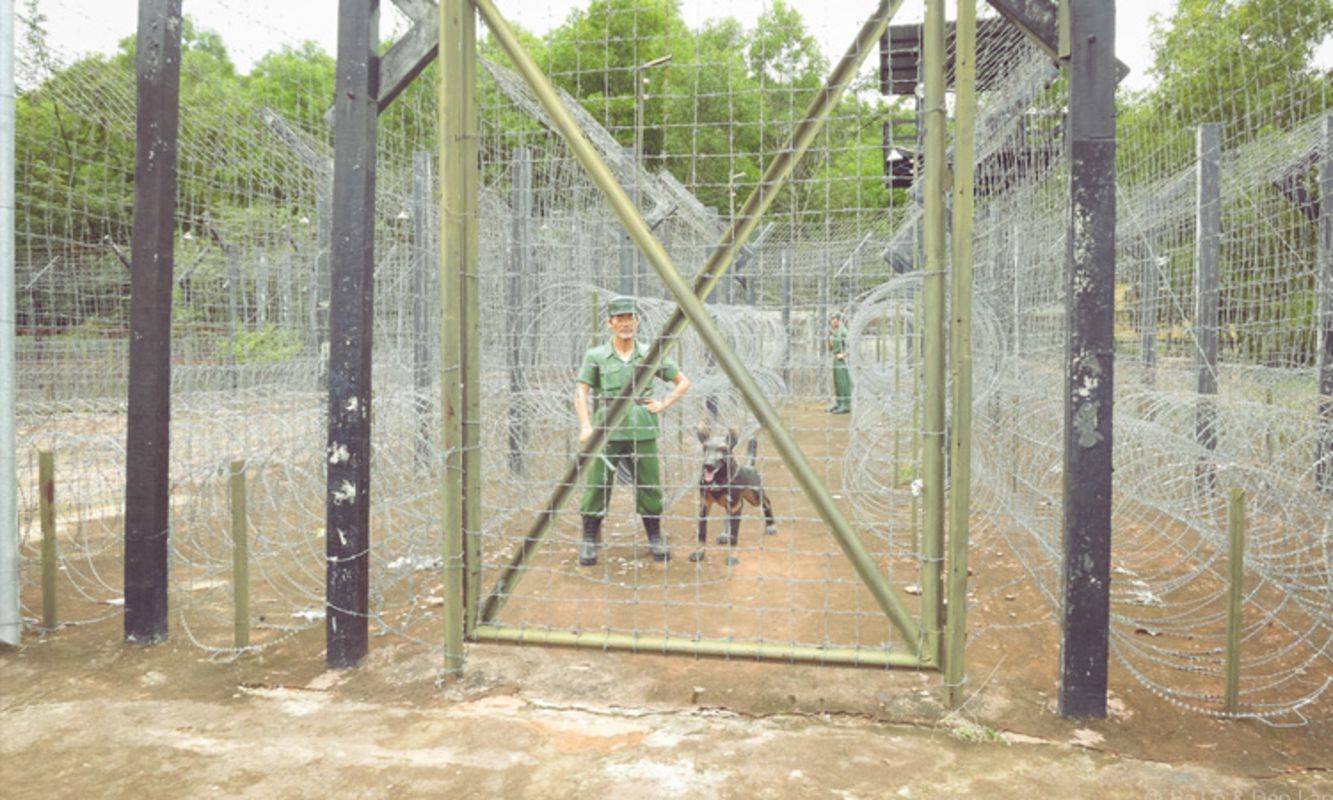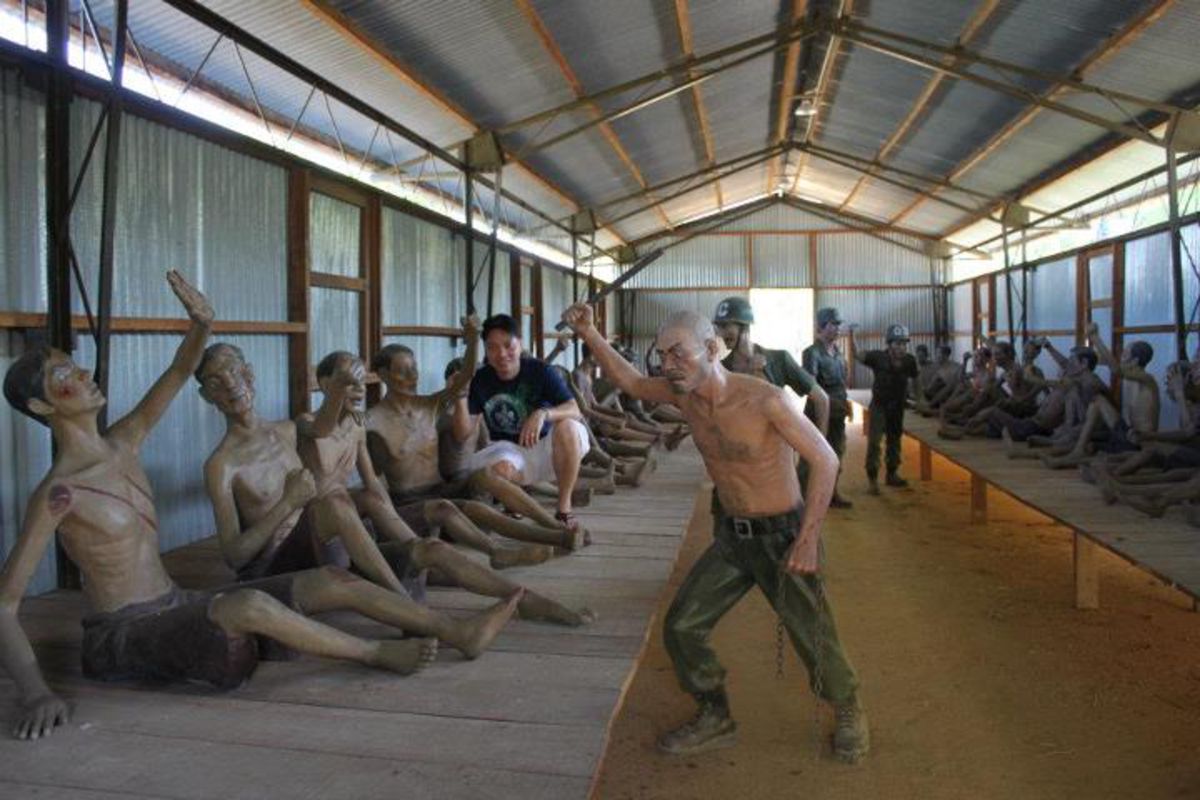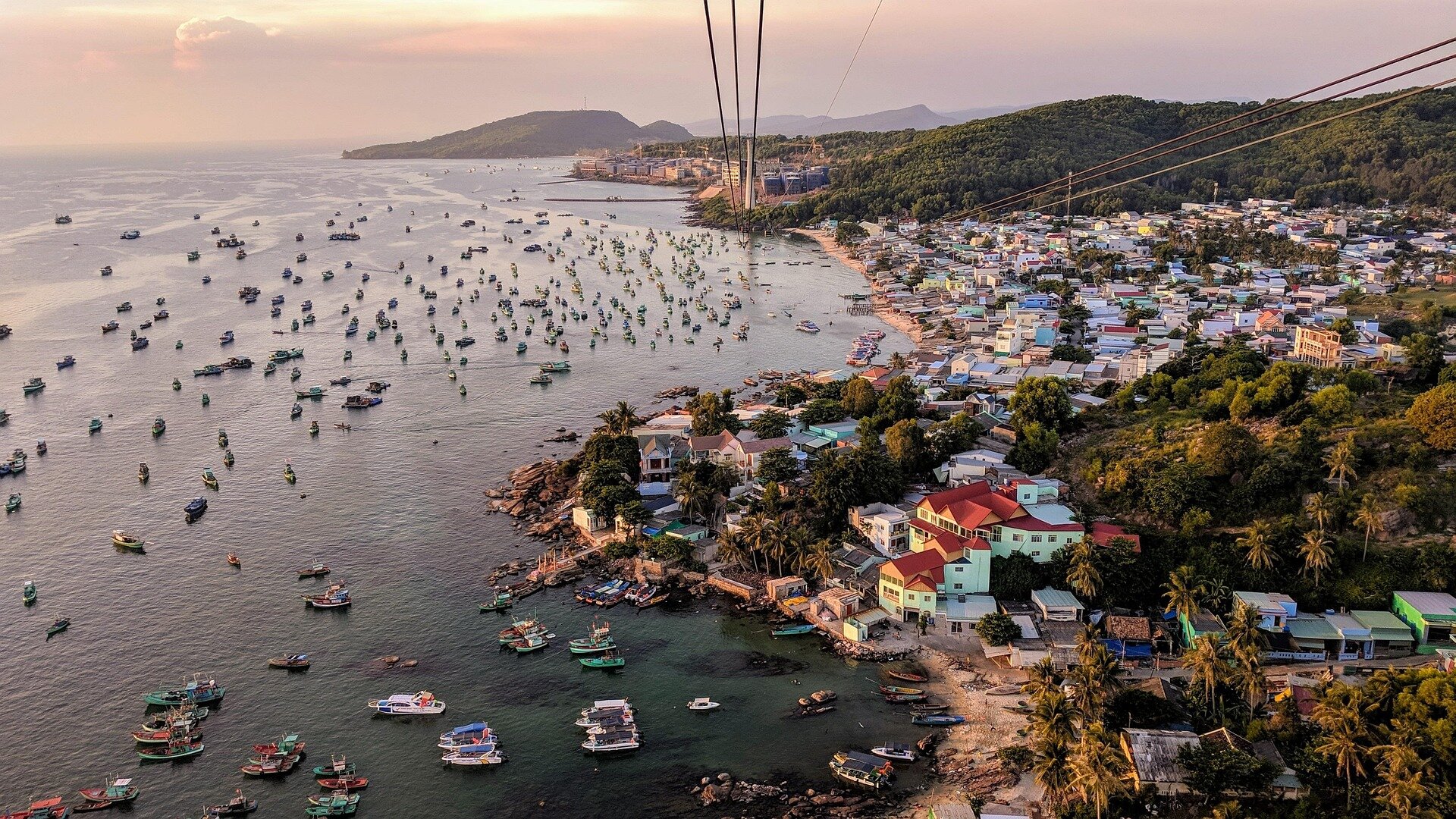Discover Phu Quoc Prison, a haunting National Historical Site in Vietnam. Learn its history, tour costs, and visiting tips. Book guided tours with Legend Travel Group for an immersive experience!
Phu Quoc, a tropical ward of Kien Giang Province, Vietnam, is renowned as the “Pearl Island” for its pristine beaches and lush landscapes in the Gulf of Thailand. Amid its natural beauty lies Phu Quoc Prison, also known as Coconut Tree Prison, a poignant National Historical Site that draws over 10,000 visitors annually, including former prisoners and history enthusiasts. Located in An Thoi, 28 km south of Duong Phong town, this former French colonial prison, built in 1949–1950, once held over 40,000 Vietnamese revolutionary soldiers and civilians during the Indochina and Vietnam Wars. Recognized as a Special National Relic in 1995, it now serves as a museum showcasing Vietnam’s wartime struggles, with exhibits like the infamous Tiger Cages and torture reenactments. Visiting Phu Quoc Prison offers a profound understanding of the nation’s resilience and sacrifices. As a premier local tour operator, Legend Travel Group curates eco-friendly guided tours to immerse you in this historical landmark, with seamless booking via links around this guide. Ready to explore this powerful legacy? Reserve your tour today
Legend Travel Group delivers authentic Vietnam experiences with expert English-speaking guides, sustainable practices, and tailored itineraries. Our Phu Quoc tours combine visits to Phu Quoc Prison with island highlights like Sao Beach, Dinh Cau Night Market, and fish sauce factories, ensuring a comprehensive adventure. With transparent pricing and free cancellations up to 48 hours before departure, we prioritize your satisfaction. Discover our curated packages to deepen your historical journey!
 Photograph the educational allure of Phu Quoc’s museum (Source: Internet)
Photograph the educational allure of Phu Quoc’s museum (Source: Internet)Phu Quoc Prison, originally named Coconut Tree Prison after its location in Cay Dua Village, was constructed by French colonists in 1949–1950 to detain Vietnamese dissidents during the Indochina War. Covering 40,000 m² (later expanded to 400 hectares), it held over 14,000 prisoners by April 1954, primarily male revolutionaries, with 99 deaths due to brutal tortures. After the 1954 Geneva Accords, the French transferred the prison to the Republic of Vietnam, which expanded it into the largest detention center in southern Vietnam, renamed Phu Quoc Communist POW Camp (1967–1973). It housed up to 40,000 prisoners, including high-ranking North Vietnamese officers, across 12 main areas (later 14), each holding ~3,000 inmates, with sub-area B2 for officers. Surrounded by 10–15 layers of barbed wire, guarded by 4,000 personnel (including navy and air forces), and patrolled by military battalions, the prison was fortified to suppress escapes.
Prisoners endured 40 types of torture, including Tiger Cages (1x2 m, barbed-wire-covered, exposed to extreme heat/cold), electric shocks, nail hammering, and crucifixion, leading to thousands of deaths and permanent disabilities. Despite this, prisoners showed resilience, digging escape tunnels using coconut shells and organizing resistance. After the 1973 Paris Peace Accords, the prison was dissolved, and inmates were released. In 1995, it was declared a National Historical Site, transformed into a museum with restored exhibits, life-sized mannequins, and a memorial honoring fallen soldiers.
Recent updates include ongoing renovations announced by the Vietnam Tourism Authority in 2023 to enhance exhibits and replace outdated mannequins, ensuring a more fitting tribute to its historical significance. The site now features a two-story exhibition house with two rooms: one displaying 43 artifacts on the prison’s history, and another with 100 photos and documents detailing torture methods. A 5-meter-high monument, depicting a figure emerging from waves, and a martyrs’ cemetery commemorate the sacrifices.
 Experience Phu Quoc Tours with sustainable exploration (Source: Internet)
Experience Phu Quoc Tours with sustainable exploration (Source: Internet)Phu Quoc Prison is open daily from 8:30 AM to 11:30 AM and 1:30 PM to 5:00 PM, with tours taking 1–2 hours. It attracts diverse visitors, including former prisoners, locals, and international tourists, offering a somber yet educational experience. Due to graphic depictions of torture, it’s not recommended for young children.
Address: 350 Nguyen Van Cu Street, An Thoi Ward, Phu Quoc, Kien Giang Province, 28–30 km south of Duong Phong town.
Getting There:
Motorbike: Rent for $6–$10/day (150,000–250,000 VND); 30-minute drive via Duong Phong–An Thoi road (DT46). Scenic but avoid muddy roads in rainy season (July–September).
Taxi/Grab: $10–$14 (250,000–350,000 VND) one-way from Duong Phong, 25–30 minutes. Use Mai Linh (+84 297 397 9797) or Xanh SM (electric taxis).
Private Car: $30–$50/day (750,000–1,250,000 VND) for a 7-seater, ideal for groups.
VinBus: Free shuttle to An Thoi (limited routes), then taxi/xe om ($2–$5) to the prison.
Our Tours: Include round-trip transfers from Duong Phong, airport, or Bai Vong Port.
Route Tip: From Duong Phong, take DT45 to Ham Ninh roundabout, turn left onto DT46 (Nguyen Van Cu), and continue 16 km to the prison on your left. Use Google Maps cautiously, as the official address may misdirect.
Entrance Fee: $1.20–$2 (30,000–50,000 VND) per person, covering access to the museum, Tiger Cages, and memorial areas. Some sources note free entry for communist historical sites, but recent updates confirm a nominal fee.
Guided Tours: $10–$15 (250,000–375,000 VND) for 1–2 hours, available in English, French, or Vietnamese. Guides provide detailed historical context, highly recommended for non-Vietnamese speakers.
Additional Costs: Souvenirs (handicrafts, war books) $1–$5 at the on-site shop; snacks/drinks $0.50–$2 (no food courts nearby, bring water).
Exhibition House: Two rooms with 43 artifacts (e.g., torture tools, prisoner items) and 100 photos/documents detailing the prison’s history and 40 torture methods.
Tiger Cages: Outdoor barbed-wire cages (1x2 m) where prisoners endured extreme conditions; mannequins depict confinement.
B2 Section: Restored models of torture methods, including electric shocks and nail hammering, with graphic displays.
Memorial & Cemetery: A 5-meter monument and martyrs’ cemetery honor fallen soldiers, covering 12,000 m².
Kien Van Church Ruins: Cement columns from a former church, spanning 4,000 m², add to the historical narrative.
Atmosphere: Somber and thought-provoking, with life-sized mannequins and detailed exhibits. Some Tripadvisor reviews note emotional intensity and occasional maintenance issues (e.g., outdated mannequins, restroom cleanliness), but renovations are improving the site.
To fully appreciate Phu Quoc Prison’s historical significance, consider these tips and tour options:
Guided Tours: Essential for understanding the prison’s context. English-speaking guides narrate stories of prisoner resilience, escape attempts, and torture methods. Book via local agencies or our tours for $10–$15.
Self-Guided Visit: Follow marked routes with English/Vietnamese signs explaining each section. Spend ~30–60 minutes exploring; avoid touching exhibits to preserve artifacts.
Photography: Permitted, but be respectful; some visitors find photographing torture reenactments unsettling.
Combine with Other Sites: Pair with nearby attractions like Sao Beach (15 km), An Thoi Archipelago, or VinWonders (40 km) for a full-day itinerary. Our tours integrate these seamlessly.
Dress Code: Wear modest clothing (cover shoulders/knees) to respect the site’s sanctity. Comfortable shoes are advised for walking.
Weather Considerations: Visit mornings to avoid afternoon showers in rainy season (July–September). Bring sunscreen, hats, and water for outdoor areas.
Our eco-friendly tours blend Phu Quoc Prison visits with island highlights, leveraging low-season discounts and expert guides for a budget-friendly, educational experience:
Half-Day Prison & Heritage Tour ($50–$70/person): Explore Phu Quoc Prison ($1.20–$2 entry), visit the Magic Well, and tour a fish sauce factory. Includes guided tour ($10–$15), transfers, and snacks.
Full-Day Historical & Cultural Journey ($90–$130/person): Visit Phu Quoc Prison, Sung Hung Pagoda, and Ham Ninh Fishing Village for seafood lunch ($3–$10). Includes entry, guide, meals, and transfers.
Private War History Adventure ($120–$180/person, min. 2): Customize with Phu Quoc Prison, Cao Dai Temple, and a pepper farm tour ($5–$10). Includes private guide, dinner, and transfers.
Prison & Beach Combo ($80–$110/person): Morning at Phu Quoc Prison, afternoon at Sao Beach with lunch at My Lan ($3–$10). Includes transfers and entry.
Multi-Day Phu Quoc Explorer ($250–$400/person, 3–4 days): Cover Phu Quoc Prison, VinWonders ($22–$30), Vinpearl Safari ($22–$30), and eco-lodge stays ($15–$40/night). Includes all activities, meals, and transfers.
Prices include guides, transfers, activities, and meals/snacks. Group discounts (10% off for 10+ travelers) and seasonal promotions available. Book now via the links on this page!
Getting to Phu Quoc: Fly to Phu Quoc International Airport (PQC) from Ho Chi Minh City ($20–$80, 50 minutes), Hanoi ($30–$100), or Bangkok ($80–$150). Ferries from Rach Gia or Ha Tien cost $7–$15 (1.5–2.5 hours). Airport to Duong Phong: taxi $7–$9.
Visa: 30-day visa-free entry for direct arrivals to Phu Quoc; E-Visa ($25) for mainland Vietnam. Verify on official Vietnamese immigration websites.
Best Time: Dry season (November–April) for clear roads; shoulder seasons (April–June, October) for savings; rainy season (July–September) for budget deals but plan indoor activities.
Sustainability: Phu Quoc aims to eliminate petrol vehicles by 2030. Our tours use eco-friendly VinBus and support local communities to preserve the UNESCO Biosphere Reserve.
Plan Ahead: Book guided tours 1–2 weeks in advance for dry season; same-day bookings often available in rainy season. Use vinpearl.com or Baolau.com for transport deals.
Pack Smart: Modest clothing, comfortable shoes, sunscreen, water; umbrellas for rainy season.
Budget Wisely: Expect $1.20–$2 for entry, $10–$15 for guides, $3–$14 for transport, $20–$300/night for stays. Carry small VND notes (5,000–20,000).
Stay Respectful: Maintain silence, avoid touching exhibits, and follow guided routes to honor the site’s significance.
Emotional Preparedness: Graphic displays may be intense; prepare for an emotional experience.
Join a Guided Tour: Our tours offer expert insights, vetted transport, and curated itineraries to enhance your visit.
 Phu Quoc Island Cable Car (Source: Internet)
Phu Quoc Island Cable Car (Source: Internet)Phu Quoc Prison, a National Historical Site, stands as a powerful testament to Vietnam’s wartime resilience, offering visitors a sobering yet educational journey through its dark past. From the haunting Tiger Cages to the poignant martyrs’ memorial, the museum at Coconut Tree Prison vividly preserves the sacrifices of over 40,000 prisoners. Whether you’re a history enthusiast or seeking a deeper understanding of Vietnam’s heritage, a visit to this iconic site is unforgettable. Legend Travel Group’s Phu Quoc Tours guide you through Phu Quoc Prison authentically, ensuring a sustainable Phu Quoc Travel experience blending historical insights with island adventures like beach visits and cultural explorations. Don’t miss this profound landmark—browse our featured tours on this page and book your Phu Quoc Prison adventure today!
Ready to uncover Phu Quoc’s historical legacy? Reserve your tour with Legend Travel Group and explore Vietnam’s Pearl Island!
Author Bio: Written by Tony Bùi, with over 20 years of experience in the travel industry, personally guiding and organizing tours for over 100,000 travellers across Southeast Asia. This guide draws from firsthand insights, guest feedback from Legend Travel Group surveys.
By Tony Bùi at Legend Travel Group (to certify content copyright)
Favorite experiences booked by travelers